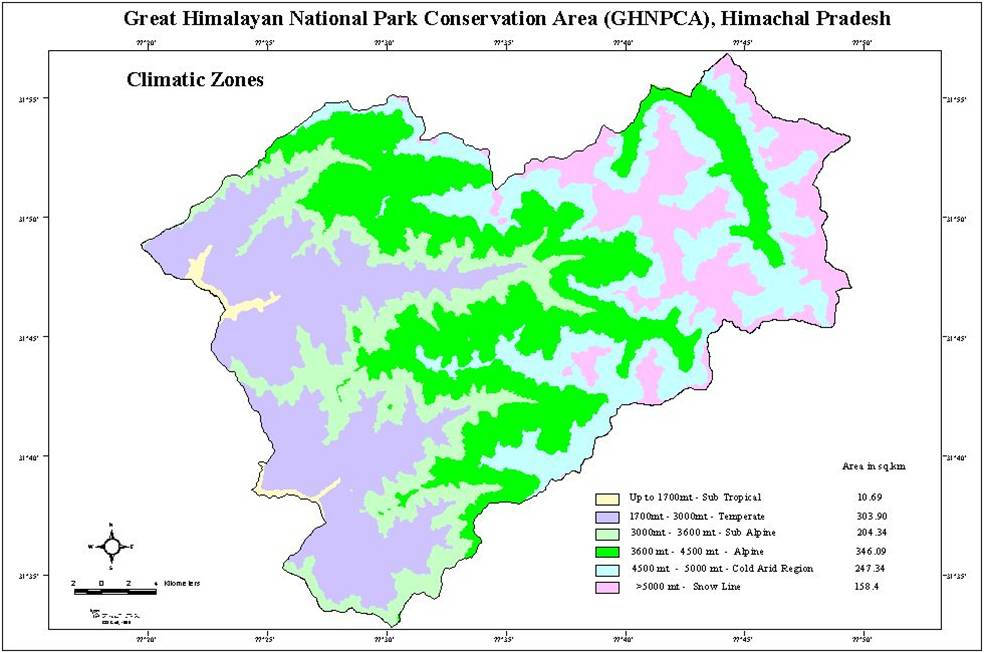
Climatic Zones in GHNP – A Guide to GHNP’s Ecology
Map Depicting the Various Climate Zone in GHNP
Overview
The climatic zones in GHNP (Great Himalayan National Park) reflect the park’s rich ecological range shaped by altitude and terrain. Located in Himachal Pradesh, GHNP is home to diverse plant and animal species, thriving in environments ranging from warm sub-tropical forests to permanently snow-covered peaks.
Why the Climatic Zones in GHNP Are Important
The climatic zones in GHNP help define conservation strategies, trekking routes, and biodiversity hotspots. As climate change continues to affect Himalayan ecosystems, understanding these zones is more important than ever for preserving native species and local habitats.
This map highlights the six primary climatic zones within the GHNPCA, categorized based on elevation. Each zone features distinct weather patterns, vegetation types, and ecological characteristics.
Climatic Zones and Area Coverage
-
Sub-Tropical Zone (Up to 1700m)
-
Color: Light Yellow
-
Area: 10.69 sq. km
-
Features: Lower elevations with warmer temperatures; supports deciduous forests and agricultural areas.
-
-
Temperate Zone (1700m – 3000m)
-
Color: Lavender
-
Area: 303.90 sq. km
-
Features: Moderate temperatures; home to coniferous forests and rich biodiversity.
-
-
Sub-Alpine Zone (3000m – 3600m)
-
Color: Light Green
-
Area: 204.94 sq. km
-
Features: Cooler climate; vegetation begins to thin, and alpine shrubs become dominant.
-
-
Alpine Zone (3600m – 4500m)
-
Color: Bright Green
-
Area: 346.39 sq. km
-
Features: Cold and windy; dominated by alpine meadows and hardy flora.
-
-
Cold Arid Region (4500m – 5000m)
-
Color: Pink
-
Area: 247.94 sq. km
-
Features: Harsh, dry climate with sparse vegetation; resembles a high-altitude desert.
-
-
Snow Line Zone (Above 5000m)
-
Color: Blue
-
Area: 158.4 sq. km
-
Features: Permanently snow-covered region with extreme cold; no vegetation.
-
Importance of Climatic Zonation
Understanding the climatic zones of GHNPCA is essential for:
-
Biodiversity Conservation: Protecting endemic and endangered species in their natural habitats.
-
Eco-Tourism Management: Guiding sustainable tourism activities based on altitude and climate.
-
Scientific Research: Supporting ecological and climate-related studies.
Explore More
Whether you’re a nature enthusiast, researcher, or traveler, the Great Himalayan National Park offers a rare glimpse into the delicate balance of climate and biodiversity in the Himalayas. Each zone tells a story of adaptation, survival, and ecological harmony.
Plan your visit or dive deeper into the ecology of GHNP by exploring more of our maps and resources.



